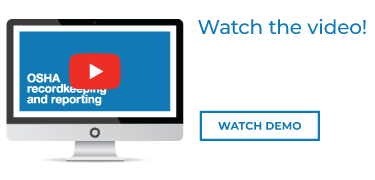Are you ready if OSHA comes calling?

OSHA just released statistics that show a significant increase in the number of inspections in their fiscal year 2019. The Federal department conducted 33,401 inspections — more inspections than the previous three years — addressing violations related to trenching, falls, chemical exposure, silica and other hazards.
It really shouldn’t be a surprise. OSHA issued a directive last year letting everyone know exactly how they are going to use the electronic illness and injury records for site-specific targeting inspections. The plan — dubbed SST-16 — was based on the data submitted for calendar year 2016 on form 300A. Even so, the announcement of how many inspections they conducted has many organizations nervous.
No organization wants to be inspected by OSHA. But the reality is that OSHA has increased its enforcement and assistance activities to accomplish its mission of ensuring that employers provide workplaces free of unsafe work conditions.
“OSHA is not looking to cite and fine people as their primary goal,” explains Rich Hammel, MD, MPH, FACPM, FACOEM, who is chief product evangelist at Enterprise Health and spent 25 years as global medical operations leader and medical director for several business units for a multinational global Fortune 100 company. “They are focused on prevention — that is, how to keep people safe and healthy at their work, and they are using technology — electronic reporting — to help quickly identify the types of industries and areas where the most problems occur. This helps them target their outreach and compliance assistance to help employers with the most need to have a safe and healthy working environment for their employees.”
Dr. Hammel is spot on. In addition to the increased number of inspections, OSHA provided a record amount of compliance assistance during the year. Assistance includes training on safety and health requirements through the Agency’s various education programs, including the OSHA Training Institute Education Centers, Outreach Training Program and Susan Harwood Training Grant Program. In FY19, OSHA’s no-cost On-Site Consultation Program identified 137,885 workplace hazards and protected 3.2 million workers from potential harm.
Given OSHA’s uptick in inspections, there are several actions you can take to make sure you are prepared should OSHA come knocking on your door:
- Stay current on OSHA recordkeeping and reporting requirements. Although the requirements changed a few times over the last couple of years, they did issue a Final Rule in January 2019 that covers which form needs to be submitted electronically. The point here is that it’s important to read the updates OSHA puts out.
- Maintain records of work-related injuries and illnesses in an interoperable employee health records system to improve accuracy, facilitate electronic reporting and speed the process of pulling information should you be targeted for an onsite inspection. Inspectors will likely need to review medical logs for specific cases, and the ability to pull requested information electronically saves time by reducing the need to manually assemble information and generate reports and reduces stress.
- Understand how to determine if an injury/illness is recordable on the OSHA 300 Log. The Enterprise Health solution is configured to capture the information mandated as part of an employee health clinic encounter. When an employee presents with a worksite injury or illness, our software collects the appropriate data elements — including whether the injury or illness is reportable.
- Eliminate labor-intensive efforts associated with assembling information and filling out forms and logs by hand. As a case is managed within the Enterprise Health solution, the information needed to complete forms and logs is amassed. Then data captured electronically is automatically rendered on OSHA documents (and can be printed on demand, if necessary.)
- Don’t wait for OSHA. Use the data you collect to proactively prevent illnesses and injuries.
Here are some OSHA resources that you may want to bookmark for future reference:
- QuickTakes — https://www.osha.gov/quicktakes/ (OSHA’s online newsletter distributed twice monthly to keep subscribers current on the agency’s most recent workplace safety health information and activities)
- Data — https://www.osha.gov/data (compare your workplace statistics to national data)
- Cooperative Programs — https://www.osha.gov/cooperativeprograms (see which program may be right for you to help prevent fatalities, injuries, and illnesses in your workplace)
Want to learn more about how easy it is to electronically submit OSHA reports using Enterprise Health? Watch this video.

